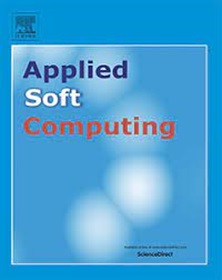Graph enhanced spatial–temporal transformer for traffic flow forecasting
IF 7.2
1区 计算机科学
Q1 COMPUTER SCIENCE, ARTIFICIAL INTELLIGENCE
引用次数: 0
Abstract
Traffic flow forecasting, which aims to predict future traffic patterns based on current conditions, is a crucial yet challenging task in intelligent transportation systems due to the complex spatial–temporal relationships involved. Existing methods often struggle to effectively capture these intricate spatial dependencies and temporal patterns. To address these limitations, we propose a graph enhanced spatial–temporal Transformer (GE-STT), which integrates a graph enhanced module and a spatial–temporal Transformer module for improved prediction accuracy. Specifically, the graph enhanced module combines a Graph Convolutional Network (GCN) with a Gated Recurrent Unit (GRU) to obtain enriched spatial–temporal features, and introduce the original traffic data as a correction term to deal with the errors in the enhancement process. The spatial–temporal Transformer then leverages these enhanced features for final prediction. Experimental results on four traffic datasets show that GE-STT achieves superior performance under various metrics. Compared with the best baseline in different datasets, the performance of GE-STT is improved by up to 8% under the MAE metric, highlighting its robustness and effectiveness in traffic flow forecasting tasks.
求助全文
约1分钟内获得全文
求助全文
来源期刊

Applied Soft Computing
工程技术-计算机:跨学科应用
CiteScore
15.80
自引率
6.90%
发文量
874
审稿时长
10.9 months
期刊介绍:
Applied Soft Computing is an international journal promoting an integrated view of soft computing to solve real life problems.The focus is to publish the highest quality research in application and convergence of the areas of Fuzzy Logic, Neural Networks, Evolutionary Computing, Rough Sets and other similar techniques to address real world complexities.
Applied Soft Computing is a rolling publication: articles are published as soon as the editor-in-chief has accepted them. Therefore, the web site will continuously be updated with new articles and the publication time will be short.
 求助内容:
求助内容: 应助结果提醒方式:
应助结果提醒方式:


